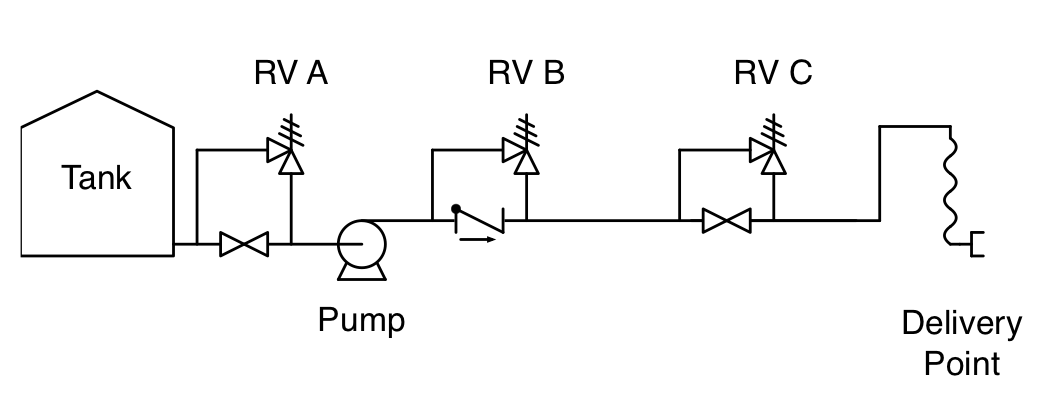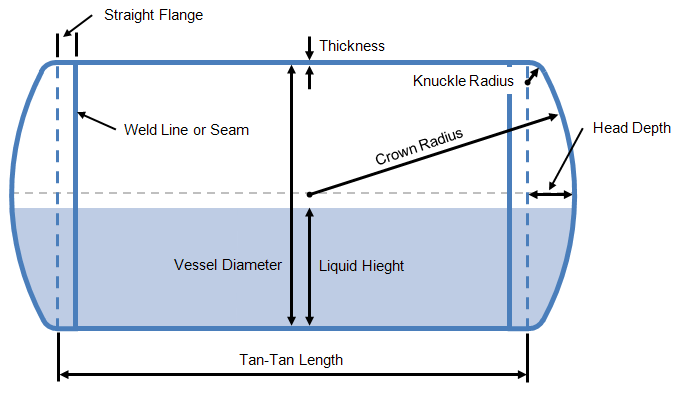Equipment

Tray efficiency measures the performance of a distillation tray or trays against the maximum theoretical performance. Similarly, a concept called Height Equivalent to Theoretical Plate (HETP) is used to measure the performance in a packed column. This article describes methods of quantifying tray efficiency in distillation tray analysis.

The calculation of the wetted area and volume of a vertical vessel is required for engineering tasks such fire studies and the determination of level alarms and control set points. However the calculation of these parameters is complicated by the geometry of the vessel, particularly the heads. This article details formulae for calculating the wetted area and volume of these vessels for various types of curved ends including: hemispherical, torispherical, semi-ellipsoidal and bumped ends.

For systems where liquid product may be trapped in a pipe section of an extended period of time thermal expansion can become a problem. Heating of the fluid in the pipe results in a rapid pressure rise as the fluid expands which can quickly exceed the design pressure of the pipeline. The damaging effects of the thermal expansion can be mitigated through the use of thermal relief valves and where there is several potential pipe blockages in series, it is often necessary to ‘cascade’ thermal relief valves back to a tank. This article describes how to design a cascading thermal relief system.
This article lists the standard effective orifice areas for the orifice designations found in API RP 526 5th edition. These orifice designations set the minimum effective orifice area which a relief valve must have to meet the API 526 requirements and must be used with the sizing equations in API RP 520 Part I.

Torque is an important parameter in ensuring motors are well suited to their intended service. This article demonstrates how to calculate torque for a given motor or drive, and provides a brief introduction to motors and torque.
The moment of inertia of a pump is its resistance to changes in angular velocity as it rotates about its shaft. Knowledge of the moment of inertia of a pump, motor and associated components is typically required for transient analysis of a pumped system. This article presents methods by which pump and motor moment of inertia may be estimated.

Pump Specific Speed, NS is a method of characterising a pump duty by head, flow rate and rotational speed. Pump specific speed may be used to determine an appropriate pump design for a given application when choosing between axial, radial or multistage centrifugal designs or positive displacement pumps.

The calculation of a horizontal vessels wetted area and volume is required for engineering tasks such fire studies and the determination of level alarms and control set points. However the calculation of these parameters is complicated by the geometry of the vessel, particularly the heads. This article details formulae for calculating the wetted area and volume of these vessels for various types of curved ends including: hemispherical, torispherical, semi-ellipsoidal and bumped ends.

This article presents the method to convert between pressure and head for several common unit sets. Head relates the pressure of a fluid to the height of a column of that fluid which would produce an equivalent static pressure at its base. It is particularly useful for the specification of pumps as it provides a measure of pressure as it is independent of fluid density.

The pump affinity laws allow the prediction of centrifugal pump performance given changes to the speed of the pump or the diameter of impeller. This article presents the pump affinity laws for reference.
Power is consumed by a pump, fan or compressor in order to move and increase the pressure of a fluid. The power requirement of the pump depends on a number of factors including the pump and motor efficiency, the differential pressure and the fluid density, viscosity and flow rate. This article provides relationships to determine the required pump power.
Cavitation is the formation and subsequent collapse of vapour bubbles in a flowing liquid and is often responsible for significant damage flow equipment such as pumps. This article will provide an overview of cavitation and provide insight into the identification and prevention of cavitation conditions through the calculation of Net Positive Suction Head (NPSH).